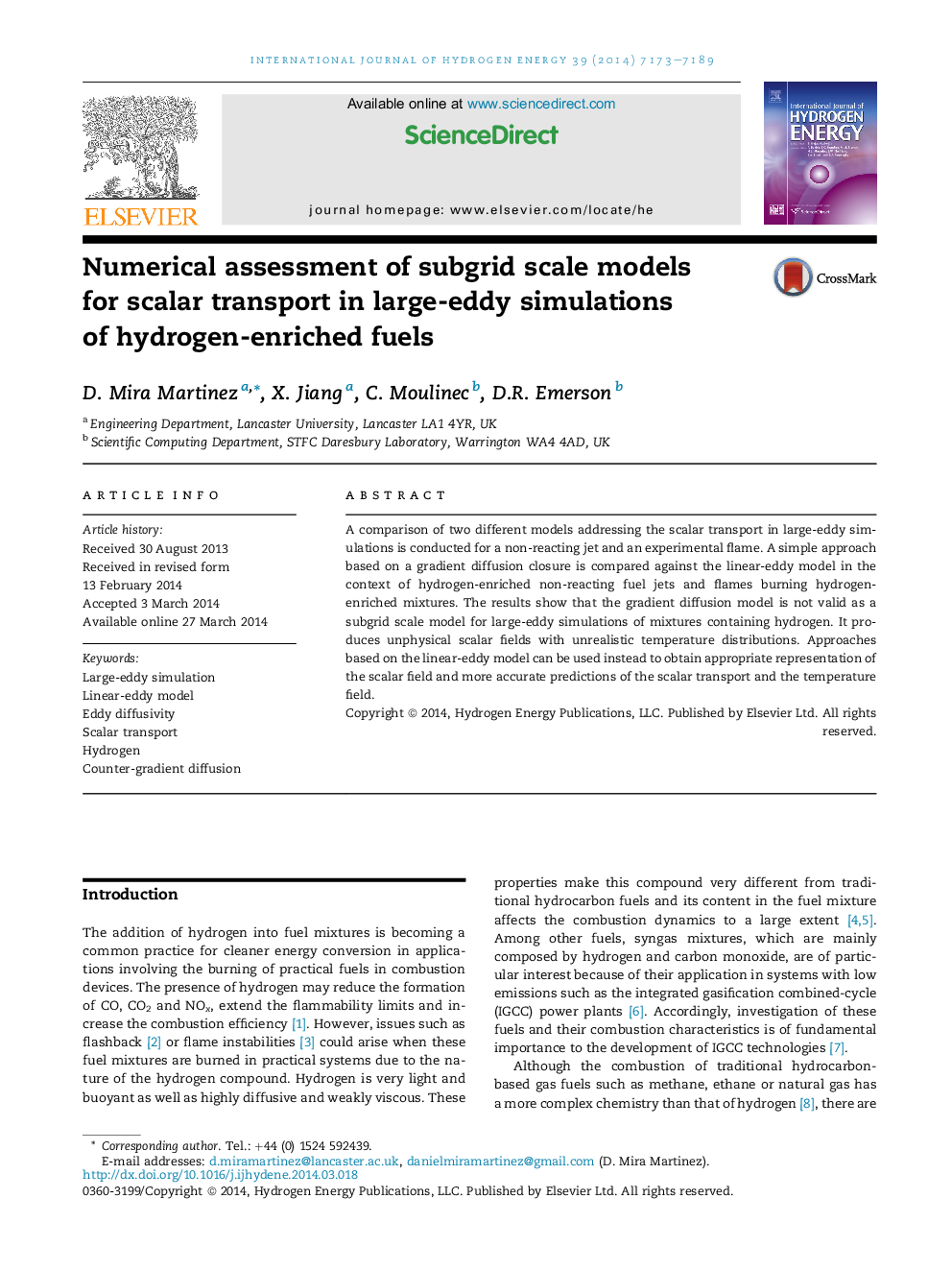| Article ID | Journal | Published Year | Pages | File Type |
|---|---|---|---|---|
| 1272694 | International Journal of Hydrogen Energy | 2014 | 17 Pages |
•Large-eddy simulations of non-reactive and reactive hydrogen jets are presented.•Two closure models for the subgrid scalar transport of hydrogen-enriched fuels are examined.•The linear-eddy model produces accurate results when modelling hydrogen mixtures.•The eddy diffusivity model may lead to unphysical representation of the scalar fields.•Appropriate modelling of hydrogen mixtures requires accounting for countergradient diffusion.
A comparison of two different models addressing the scalar transport in large-eddy simulations is conducted for a non-reacting jet and an experimental flame. A simple approach based on a gradient diffusion closure is compared against the linear-eddy model in the context of hydrogen-enriched non-reacting fuel jets and flames burning hydrogen-enriched mixtures. The results show that the gradient diffusion model is not valid as a subgrid scale model for large-eddy simulations of mixtures containing hydrogen. It produces unphysical scalar fields with unrealistic temperature distributions. Approaches based on the linear-eddy model can be used instead to obtain appropriate representation of the scalar field and more accurate predictions of the scalar transport and the temperature field.
